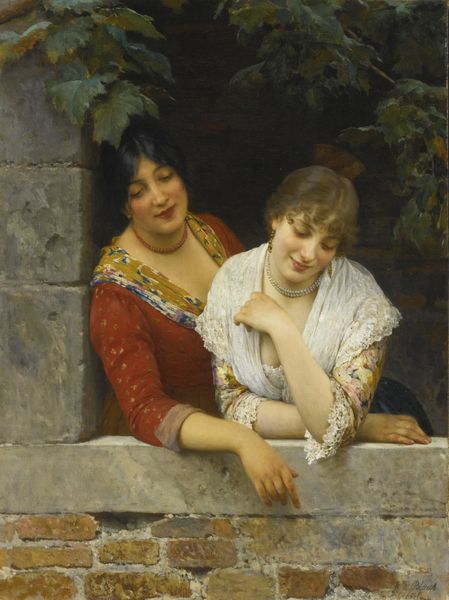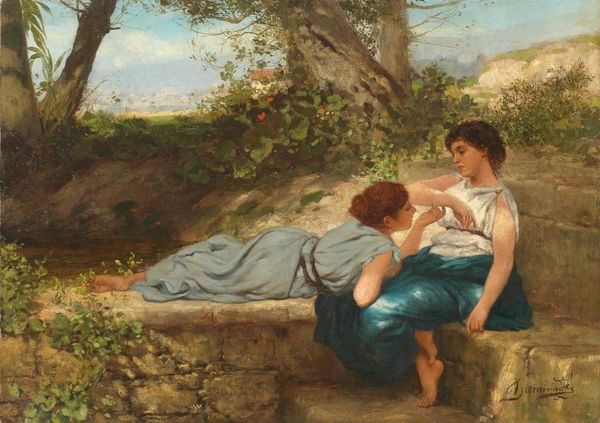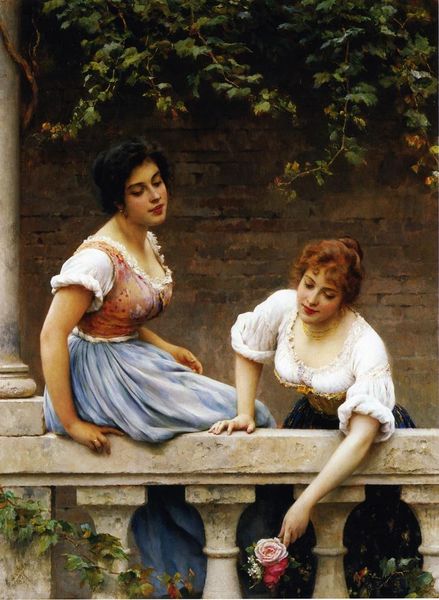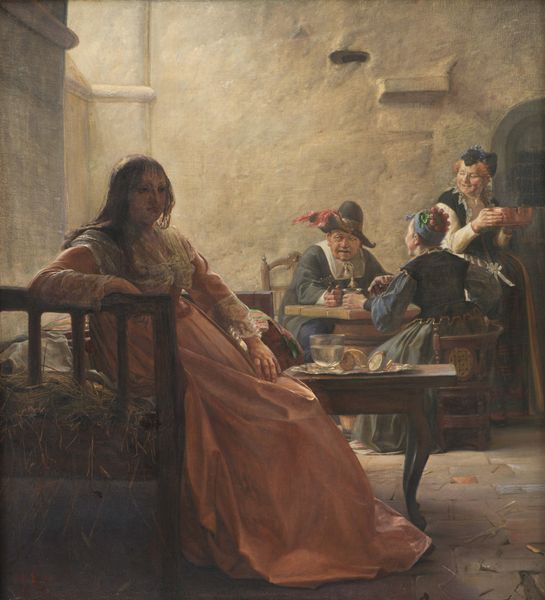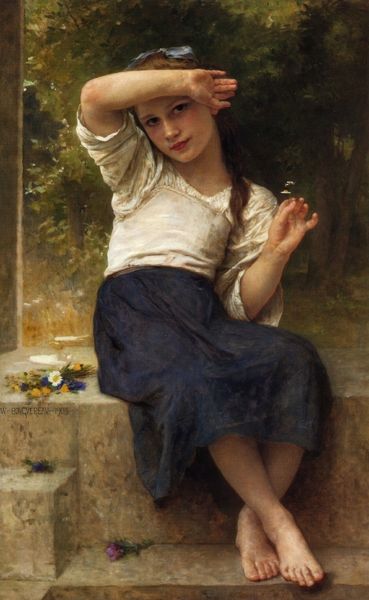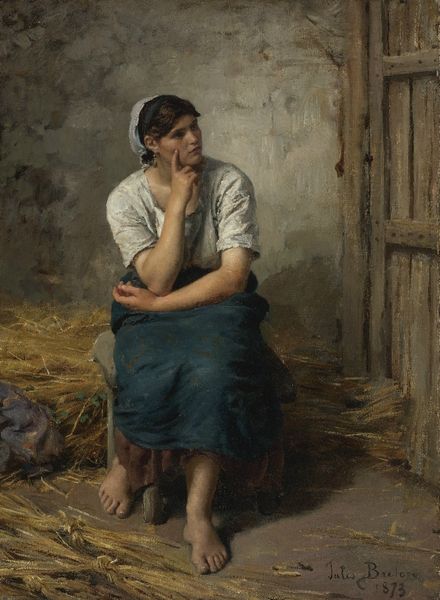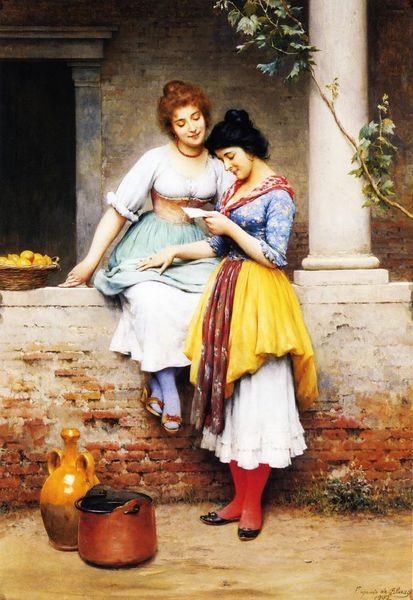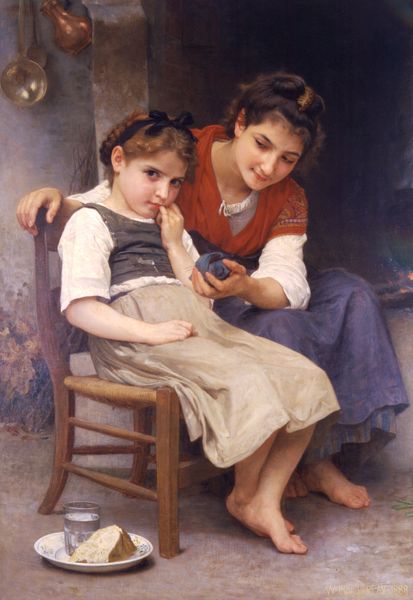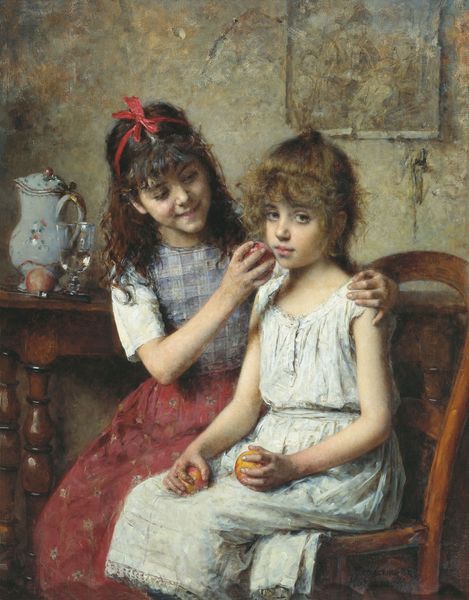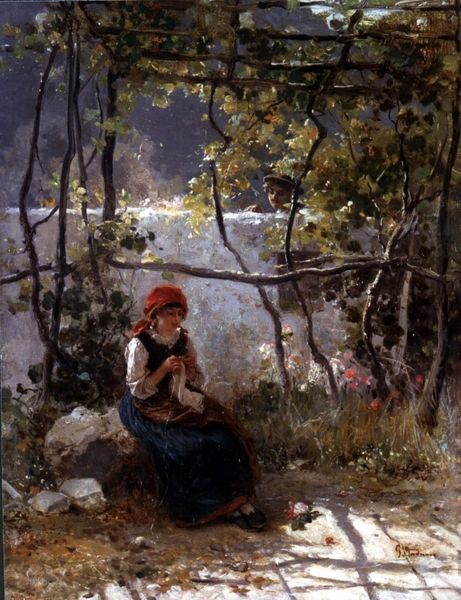
Dimensions: 145 cm (height) x 95 cm (width) (Netto)
Editor: Elisabeth Jerichau Baumann's painting, "L'Aspetta. She is waiting for him," from 1878. The two women are resting on a stone structure, and a hopeful, yet melancholic, mood comes across. How do you interpret this work? Curator: The image is a perfect echo of romantic expectation. We see two figures bound together, but differentiated through attire, which operates like a code— the older one, adorned with jewelry and shawl, signifying worldly experience, guarding the younger's innocence. The title itself tells a part of the story, but the symbolism within the figures' arrangement fills out a whole narrative. What feelings do you think the painter wanted to invoke using these images? Editor: I would say anticipation or perhaps boredom, as they are just waiting and passing the time together. They also look pensive as they rest on the stone structure, with trailing plants indicating time passing. Curator: Yes, the structure on which they rest acts as a symbolic border between the women and the rest of the world. These are potent archetypes - womanhood and innocence patiently wait, while being set apart from worldly action. Think too about the cross in the older women's necklace, juxtaposed against the trailing plants-- can these inform one another? Editor: That's an interesting point! The contrast between religious symbolism and nature... It almost feels like a meditation on duty versus free will, and perhaps on their consequences. The symbols together do create layers of meaning, especially across time. Curator: Precisely! The painting reveals layers of societal expectations and anxieties of that time period, making it something of an evocative document for cultural memory, not just an aesthetically pleasing visual. Editor: That gives me a lot to consider. Thanks for sharing your insights, I hadn’t noticed how much the symbols amplified the emotions.
Comments
No comments
Be the first to comment and join the conversation on the ultimate creative platform.
